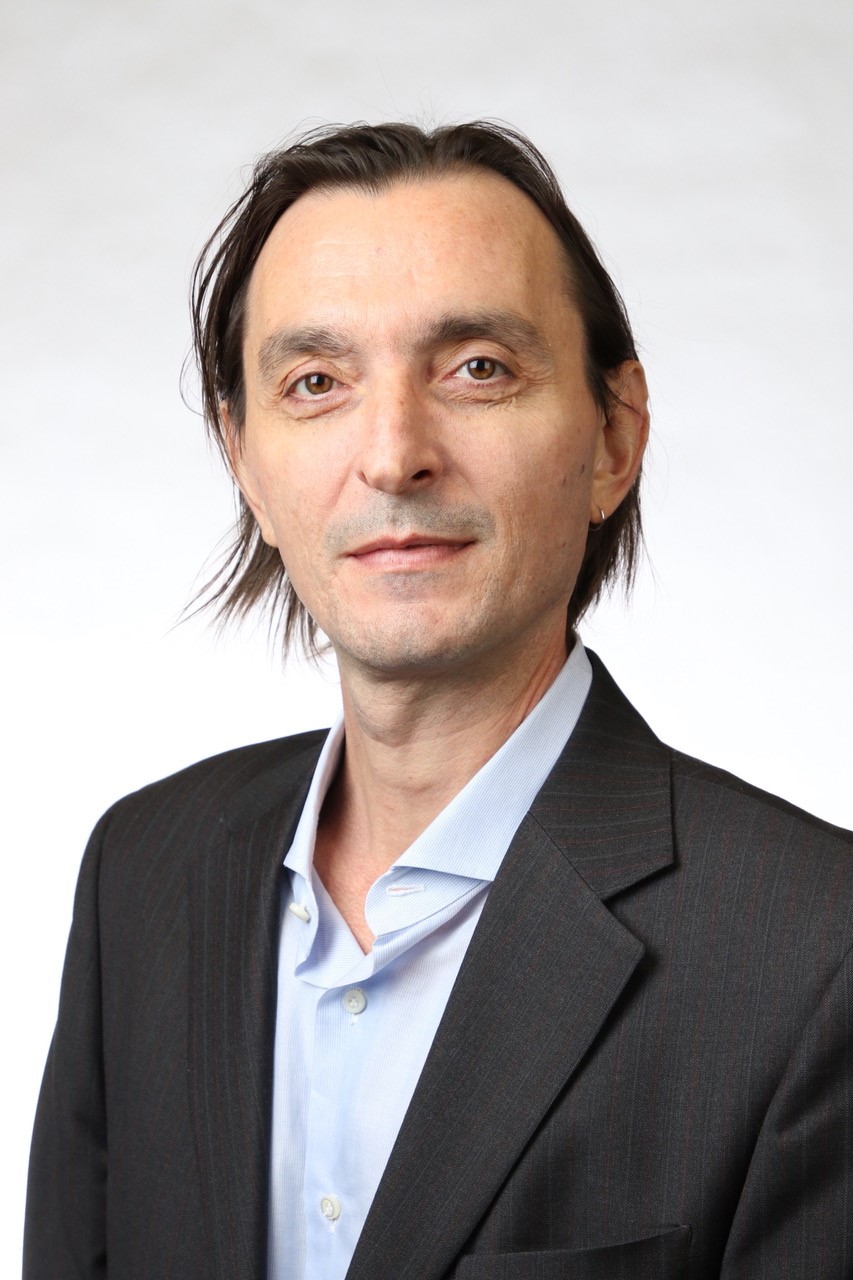Dr. Rota, Research with "Beating Heart"
Known for His Affable Personality and Warm Smile, Dr. Marcello Rota Has Dedicated His Career to the Study of the Complexities of the Beating Heart

Marcello Rota, Ph.D., associate professor of the department of physiology, GSBMS mammalian physiology course co-director and basic cardiovascular science laboratory P.I., received a master’s degree in Natural Sciences from the University of Parma in Italy, with a research thesis discussing mechanisms underlying the origin of arrhythmias. As part of his Ph.D. studies, he moved to Brooklyn in 2001 to conduct research in the laboratory of Mario Vassalle, M.D., at the State University of New York at Downstate Medical Center. The laboratory was actively investigating factors responsible for the spontaneous beating of the heart. He had the opportunity to learn and apply electrophysiological techniques, including patch-clamp, to investigate ionic currents and voltage oscillations in pacemaker cells. His work led to the identification of a novel sodium current implicated in the diastolic depolarization of Purkinje fibers, which act as subsidiary pacemaker of the heart.
After the research experience at Downstate, Dr. Rota joined NYMC in the emerging field of cardiac regeneration and cellular homeostasis. In the new environment, he became proficient with the creation of rodent models of myocardial injury and the assessment of cardiac remodeling and function. This expertise allowed him to join forces with the local team and to evaluate, from a functional perspective, the regenerative properties of stem cells and consequences of interventions promoting cardiac repair.
While working on collaborative projects focused on myocardial regeneration, Dr. Rota continued to investigate electrophysiological aspects of cardiomyocytes, with emphasis on the heterogeneity of the myocyte cell population of the adult heart. Specifically, he tested whether myocytes of different sizes have comparable function and, possibly, reflect different levels of maturation. To address these questions, he used isolated cell preparations and evaluated electrical and mechanical properties in small and large myocytes. He found that cell size inversely correlates with the duration of the action potential, which in turns modulates calcium cycling and mechanical behavior. But whether heterogenous cell size reflects different developmental stages of myocytes maturation could not be entirely addressed with the ongoing study. Thus, he began to analyze the population of undifferentiated cardiac cells with stem cell-like properties, with the scope to test their properties and possible relations with cardiomyocytes. With his colleagues, he found that undifferentiated cells have intracellular calcium oscillations, which are mediated by the translocation of calcium from the endoplasmic reticulum to the cytoplasm, via inositol trisphosphate receptors (IP3Rs). Interestingly, he found that, rather than activating contractile apparatus as it occurs in myocytes, calcium oscillations in undifferentiated cardiac cells regulate cell growth.
In 2007, Dr. Rota moved to Boston at the Brigham and Women’s Hospital/Harvard Medical School, where his mentor was recruited as head of the Center for Regenerative Studies. He was appointed lecturer and, while maintaining strong collaborations with his supervisor, he began developing an independent line of research focused on functional adaptations of the heart under physiological and pathological circumstances. With his team, he further studied IP3Rs found in undifferentiated cells and tested whether these channels are functional in adult myocytes. With an article in Circulation in 2013, his group documented that IP3Rs are expressed in human and rodent cardiomyocytes and, when activated, provide inotropic support to the myocardium but increase the susceptibility to arrhythmias. Importantly, he reported that IP3Rs are upregulated in the failing human heart, raising the possibility that diseased conditions induce re-expression of genes found in fetal development and in the undifferentiated cell state.
Dr. Rota and his team began collaborative work on a project addressing the effects of aging on the heart. Initial results documented that the defective performance of cardiomyocytes from old animals is responsible, at least in part, for diastolic dysfunction and exercise intolerance, features that are typically found in the elderly. Dr. Rota, with his team and collaborators including the late Thomas Hintze, Ph.D. ’80, former chair of the Department of Physiology at NYMC, began to unravel the mechanisms underlying the defective function of old cardiomyocytes. They reported in Nature Communication and American Journal of Physiology that the late sodium current and prolongation of the action potential in myocytes are key determinant of the deteriorated function of the aged heart.
In 2016, Dr. Rota joined his long-term collaborator Dr. Hintze. The return to the College allowed Dr. Rota to build a solid research program investigating cellular alterations underlying the defective performance of the diseased heart. Moreover, he started collaborating with local scientists, including Jason Jacobson, M.D., clinical electrophysiologist at Westchester Medical Center, strengthening the translational and clinical aspects of ongoing research. Current research projects in the laboratory address the electromechanical remodeling of cardiomyocytes following ischemic damage and metabolic syndrome.
A well loved and respected faculty member, Dr. Rota was recently chosen by GSBMS students to be the keynote speaker at this year's Ph.D. Lab Coat Ceremony. During his address titled, "What's Next", he spoke about his personal journey in research and encouraged students to continue to ask questions and be curious.
He is very enthusiastic about the vibrant research and educational environments at NYMC and opportunities to actively contribute to these areas. He values working with students, fellows, and colleagues on didactic or experimental activities. Whether addressing novel strategies to repair the diseased heart in the laboratory or solidifying the understanding of physiological principles in the classroom, he recognizes that teamwork is key for success in science and academia. He is well aware of the potential of students and staff at the GSBMS and comments that he may be looking forward to working with you on the next project!
